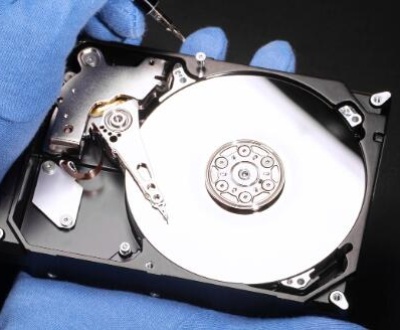Why Backup Your External Hard Drive?
Data Security
An external hard drive is susceptible to various risks such as mechanical failure, accidental deletion, or corruption. Backing up the drive helps mitigate these risks and protects your valuable data.
Disaster Recovery
In case of a hardware failure or other catastrophic events, having a backup ensures that you can recover your data quickly and minimize downtime.
Compliance and Peace of Mind
For businesses, data backups are often required to meet legal or industry standards. Personal users also benefit from the peace of mind that comes with knowing their data is safe.

Choosing a Backup Method
Local Backup
Local backups involve creating copies of your data on another physical storage device, such as an additional external hard drive or network-attached storage (NAS).
Cloud Backup
Cloud backups store your data on remote servers maintained by a third-party provider. This method offers off-site storage and is accessible from anywhere with an internet connection.
Hybrid Backup
A hybrid approach combines both local and cloud backups to offer the advantages of both methods. It provides redundancy and allows you to quickly access local backups while also securing data off-site.
Backup Strategies
Full Backup
A full backup involves copying all data from the external hard drive to the backup destination. This is the most comprehensive method but can be time-consuming and requires significant storage space.
Incremental Backup
Incremental backups only copy data that has changed since the last backup. This method saves time and storage space, but the initial full backup is still necessary.
Differential Backup
Differential backups copy all data that has changed since the last full backup. This method strikes a balance between full and incremental backups but requires more storage than incremental backups.
Versioned Backup
Versioned backups keep multiple versions of your files, allowing you to revert to previous versions if needed. This is particularly useful for recovering from accidental changes or deletions.
Step-by-Step Backup Process
1. Assess Your Data
Evaluate the amount of data on your external hard drive to determine the appropriate backup method and storage requirements.
2. Choose Your Backup Destination
Decide whether you’ll use a local backup, cloud backup, or a hybrid approach. Ensure the backup destination has sufficient storage capacity.
3. Select Backup Software
Choose backup software that suits your needs. Many options are available, ranging from built-in tools to specialized third-party applications.
4. Configure Backup Settings
Set up your backup software by configuring options such as backup frequency, type (full, incremental, or differential), and destination.
5. Start the Backup Process
Initiate the backup process and monitor its progress. Ensure that the backup completes successfully and that all data is copied correctly.
6. Verify the Backup
Check the backup files to ensure that they are complete and accessible. Perform a test restore to confirm that the backup can be used to recover your data.
Tools and Software
Built-in Backup Tools
Windows Backup and Restore: For Windows users, this tool allows you to create backups and restore data.
Time Machine: Mac users can use Time Machine to create backups and manage versions of their data.
Third-Party Backup Software
Acronis True Image: Offers comprehensive backup solutions, including disk imaging and cloud backup.
EaseUS Todo Backup: Provides various backup options, including full, incremental, and differential backups.
Backblaze: A cloud backup service that offers unlimited storage and automatic backups.
Cloud Storage Services
Google Drive: Offers cloud storage with integration into Google’s ecosystem.
Dropbox: Provides file synchronization and cloud storage.
Microsoft OneDrive: Integrates with Microsoft Office and offers cloud storage solutions.
Testing Your Backup
Perform Test Restores
Regularly test your backup by performing a restore operation. This ensures that the backup files are intact and that the restoration process works correctly.
Check Backup Logs
Review backup logs for any errors or issues that may have occurred during the backup process. Address any problems promptly to avoid potential data loss.
Maintaining Your Backup
Regular Updates
Schedule regular backups to ensure that your data is consistently updated. The frequency of backups depends on the volume of changes and the importance of the data.
Monitor Backup Health
Regularly check the health of your backup storage devices and software. Replace any failing hardware and update software to ensure optimal performance.
Secure Your Backups
Protect your backups with strong passwords and encryption to prevent unauthorized access. Ensure that cloud backups are secured with two-factor authentication (2FA) if available.
Backing up your external hard drive is a critical step in safeguarding your data. By choosing the right backup method, following a structured backup process, and regularly testing and maintaining your backups, you can ensure that your data remains safe and accessible.
About us and this blog
Panda Assistant is built on the latest data recovery algorithms, ensuring that no file is too damaged, too lost, or too corrupted to be recovered.
Request a free quote
We believe that data recovery shouldn’t be a daunting task. That’s why we’ve designed Panda Assistant to be as easy to use as it is powerful. With a few clicks, you can initiate a scan, preview recoverable files, and restore your data all within a matter of minutes.
Subscribe to our newsletter!
More from our blog
See all postsRecent Posts
- Data recovery salt lake city utah 2025-04-18
- Data recovery sacramento 2025-04-18
- Data recovery miami 2025-04-18

 Try lt Free
Try lt Free Recovery success rate of up to
Recovery success rate of up to









